Introduction
The integration of automation and artificial intelligence has transformed the banking industry, revolutionizing both efficiency and customer service. Banks that have embraced these innovations, such as Capital One, are setting industry benchmarks by adopting new technologies and fostering a culture of innovation. Accenture’s research reveals that a significant portion of banking tasks could be influenced by AI, highlighting the potential for automation and augmentation.
This technological revolution not only improves internal processes but also reshapes the customer banking experience with real-time updates, personalized advice, and round-the-clock service. However, the implementation of automation comes with challenges, such as ensuring the security of customer data. Despite the challenges, the potential for improved efficiency, reduced errors, and cost savings make automation a worthwhile pursuit for forward-thinking banks.
In this article, we will explore the benefits of automation in banking, the key areas where automation is being implemented, case studies of successful automation initiatives, the technologies used in banking automation, the importance of real-time data processing and compliance, how automation enhances the customer experience, and the future of banking automation with AI and machine learning.
Benefits of Automation in Banking
The field of finance has been greatly changed by the incorporation of mechanization and synthetic intelligence, resulting in a notable improvement in both effectiveness and client support. Banks that have embraced these innovations, like Capital One with its pioneering move to the cloud and utilization of Slack for seamless collaboration, are setting industry benchmarks. Such digital transformation is not just about adopting new technologies but also fostering a culture of innovation that permeates every aspect of the organization.
Accenture’s research highlights this period of transformation, showing that a remarkable 73% of the time bank employees invest could be impacted by generative AI, with 39% open to mechanization and an additional 34% to augmentation. This revolution in financial services is not just about internal processes; it’s reshaping the customer finance experience with real-time updates, personalized financial advice, and round-the-clock customer service, meeting the demands of a new generation that prioritizes smooth, digital-first interactions.
The move towards automation is further highlighted by the fact that occupations constituting 41% of financial sector personnel are involved in tasks highly suitable for automation. This move is not just a fleeting trend; it’s a strategic imperative in an industry where big tech firms are increasingly encroaching on traditional banking territory. Adopting such technologies not only positions banks to better compete but also to secure their role in a future where banking-as-a-service models, offered by companies like Cross River, are becoming more prevalent.
The implementation of such technologies is not without its challenges, however. As observed in the recent security breaches impacting banks such as Flagstar, attentiveness is essential in protecting client data during this digital transition. However, the possibility for enhanced process efficiency, decreased mistake rates, and cost savings makes the pursuit of intelligent mechanization a worthwhile undertaking for forward-thinking banks.
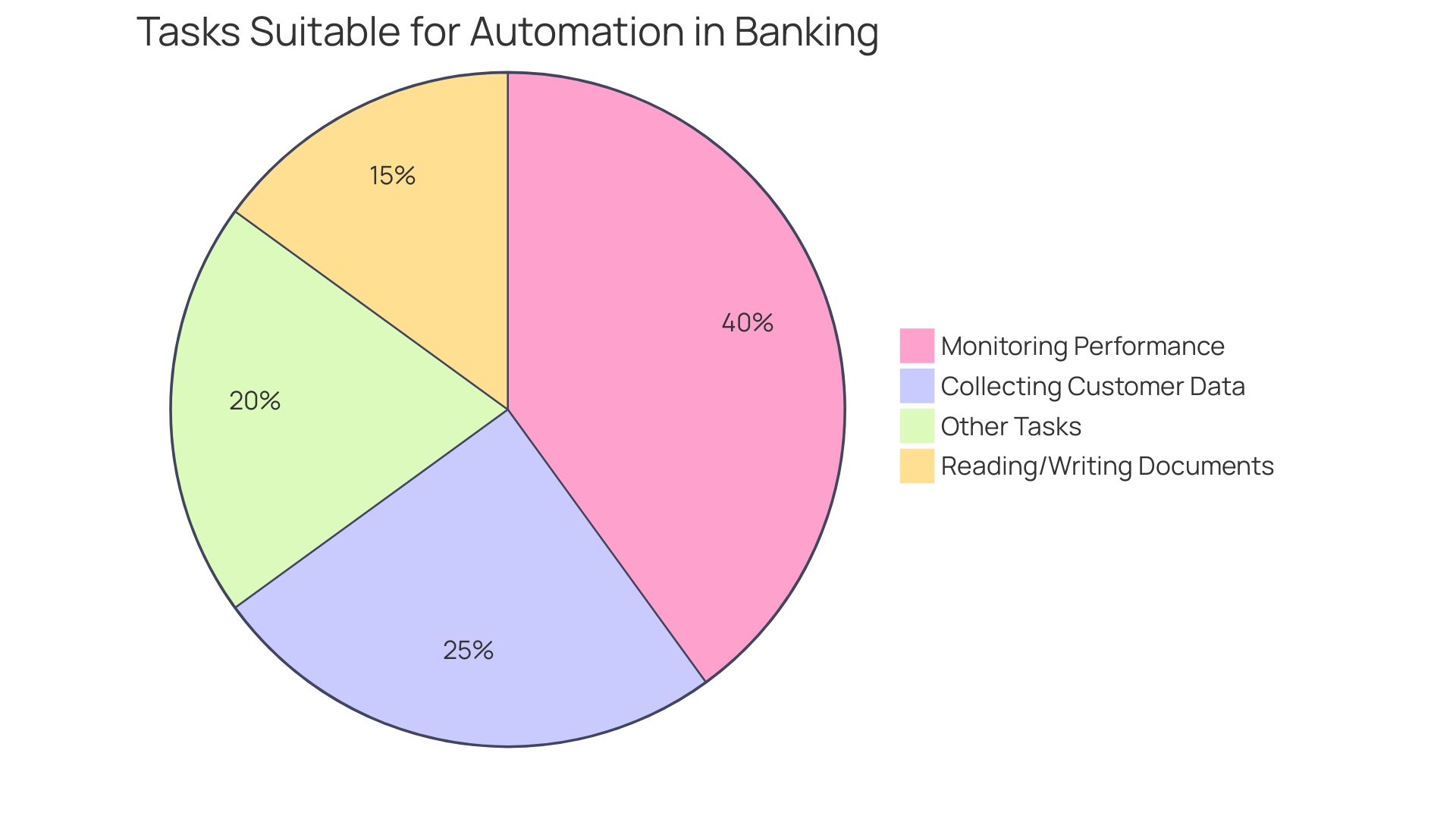
Key Areas of Automation in Banking
The range of mechanization in the financial sector covers many essential functions, from client onboarding and account administration to advanced fraud prevention measures. For instance, advancements in loan processing have streamlined the once burdensome application procedures, greatly reducing approval times and enhancing satisfaction of the clients. Payment processing, too, has been revolutionized; transactions that once took days can now be completed in mere seconds, securely and with fewer errors.
In the domain of service to clients, automation brings a new level of responsiveness. Advanced digital assistants, like One Zero Bank’s AI-based ‘Ella’ 2.0, provide 24/7 support in multiple languages, offering instantaneous and tailored financial guidance. This level of service was once unimaginable, but now sets a new standard in customer interactions.
Furthermore, banks have found a way to make regulatory compliance, which is a complicated and constantly changing obstacle, easier to handle. By harnessing technologies like generative AI, banks can ensure adherence to regulatory requirements with greater precision and less manual oversight.
Significant productivity gains are on the horizon for early adopters of these automated technologies. According to Accenture, 73% of banking tasks in the U.S. could be impacted by AI, with the potential to reduce working hours significantly. Similarly, the International Federation of Robotics reports that the deployment of industrial robots has reached new heights, particularly in sectors like automotive and electronics, signaling a broader shift across industries.
Capital One exemplifies the transformative power of a collaborative culture in embracing these changes, leveraging platforms like Slack to automate workflows and foster innovation across departments. This shift to a cloud-based infrastructure has positioned them at the forefront of the industry’s digital transformation.
As mechanization keeps on redefining the economic landscape, institutions like Cross River have emerged as leaders in Banking-as-a-Service (BaaS), emphasizing the symbiotic relationship between conventional banks and cutting-edge technology companies. This trend, mirrored by the increasing presence of Big Tech in money-related services, underscores the need for banks to remain agile and innovative in the face of rapid technological advancement.
In summary, the incorporation of automation in financial services not only improves operational effectiveness but also opens up new opportunities for wealth management and client interaction, all while managing the intricate relationship between technology and human resources.
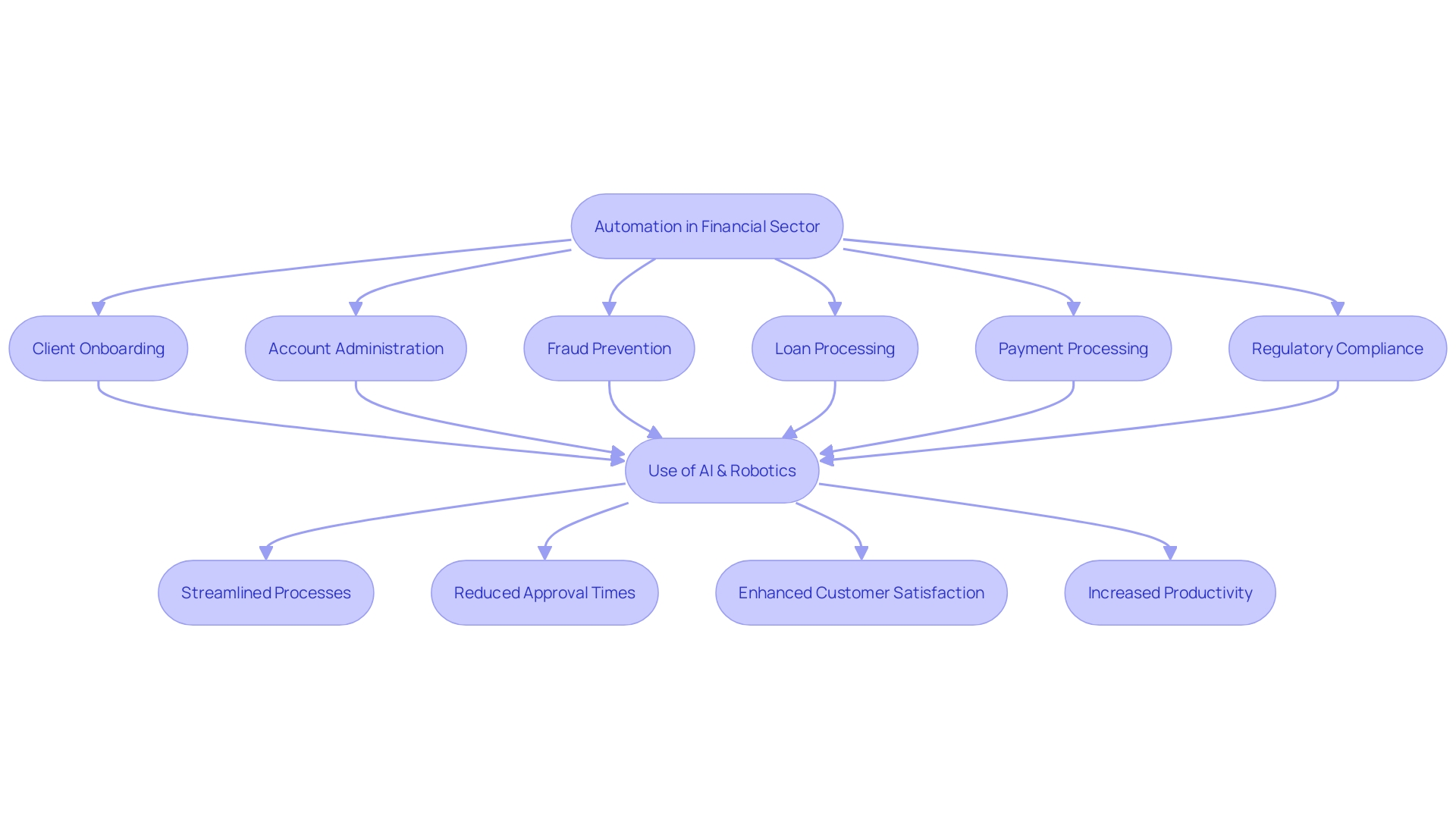
Case Study: Implementing Automation in Banking Processes
Automation in banking and financial services is not just a trend; it’s a powerful force reshaping how institutions operate. A prime example of this transformation is seen in the account opening and onboarding processes. By incorporating Robotic Process Automation (RPA) technology, banks have witnessed a significant decrease in the time and energy needed to initiate new accounts, resulting in a faster onboarding encounter for individuals. This movement towards mechanization not only accelerates the process but also improves data accuracy, virtually eliminating errors that could spoil the customer experience.
One such organization that has embraced mechanization is Capital One, a significant player in the U.S. financial sector. Capital One has revolutionized its operations by migrating to the cloud and leveraging Slack for collaboration among its 50,000 employees. This move underscores the bank’s commitment to innovation and digital transformation, setting a new standard for operational efficiency in the financial industry.
The significance of mechanization in the banking industry is further emphasized by OCBC’s deployment of a ChatGPT-powered client, which is set to revolutionize how the bank’s 30,000 employees worldwide engage with technology. With AI making more than four million decisions daily, ranging from risk management to service, banks are poised to handle even more—projected to reach 10 million daily decisions by 2025.
As technology continues to advance, it is evident that it’s not only about replacing manual tasks but also about improving customer relationships. For instance, the successful implementation of advanced technology in a prominent bank’s Customer Relationship Management (CRM) system has facilitated customized interactions and focused marketing endeavors, demonstrating the potential of technology as a driver for customer-centric initiatives.
The increasing application of automation in banking, from the adoption of chatbots and virtual assistants to sophisticated AI and machine learning algorithms, is not merely for efficiency. It’s about paving the way for a more secure, compliant, and customer-focused future in services. As pointed out by Shagun, CEO of System, an astounding 80% of monetary operations could potentially be automated, emphasizing the untapped potential for banks to enhance strategic initiatives and customer satisfaction.
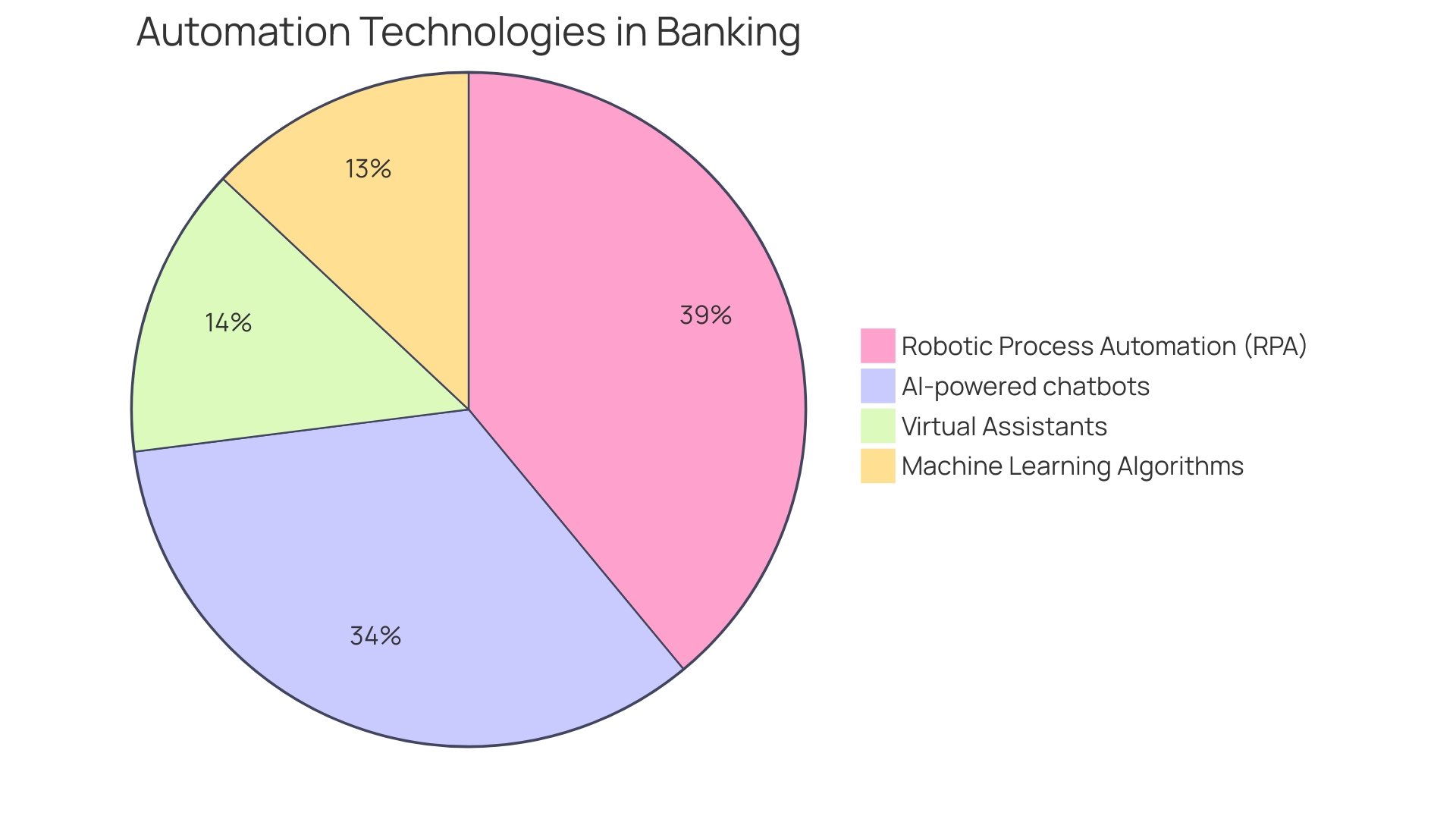
Technologies Used in Banking Automation
The partnership between artificial intelligence (AI) and financial services is transforming the financial services landscape, presenting innovative solutions that revolutionize traditional practices. By automating tasks through Robotic Process Automation (RPA), banks can reroute human capital from repetitive data entry and transaction processing to more strategic roles. For instance, M&T Bank, a stalwart with over 165 years of service, proactively established Clean Code standards to enhance their software’s maintainability and performance, thereby streamlining operations.
Capital One’s shift to a cloud-based infrastructure and the use of Slack as a collaborative platform underscores a culture that embraces automation and efficiency. This cross-departmental digital transformation initiative supports the premise that adopting new technologies, like Graph Neural Networks (GNNs) for intricate data analysis and fraud detection, is vital for the industry’s evolution.
Furthermore, AI’s capacity to gather and condense information from fragmented financial infrastructures enhances the relationship managers’ ability to serve their clients effectively. Conversational AI tools like Eno, Erica, and Ella utilize Large Language Models to provide personalized, multilingual support, reflecting a significant reduction in operational hours and an elevation in service quality.
Statistics Canada’s recent findings reveal that 6.1% of businesses have already begun leveraging AI in their operational processes, indicating a growing trend towards technology-driven efficiency. This is shown by One Zero Bank’s launch of ‘Ella’ 2.0, a digital private banker that demonstrates the smooth integration of AI in the financial sector to meet the high demand for secure and efficient customer service. These advancements indicate a transition towards an automated, customer-centric future, where AI-driven technologies play a vital role in enhancing both processes and wealth management.
Real-Time Data Processing and Compliance
Automation technology, particularly Robotic Process Automation (RPA), is revolutionizing banking by offering the ability to process data in real-time, enhancing decision-making capabilities, and ensuring stringent compliance with regulatory mandates. This technological advancement leverages software robots to handle tasks ranging from data entry to complex transaction processing, facilitating a seamless flow of operations and adherence to regulations. Adopting automated processes, organizations like M&T Bank and Capital One have set benchmarks in maintaining high-quality software standards and a cloud-first approach, respectively. These banks are not only simplifying processes but also promoting a culture of innovation and collaboration using platforms like Slack to drive digital transformation.
The urgent requirement for secure data management and consumer data rights, as emphasized by recent suggestions from the Consumer Financial Protection Bureau, highlights the significance of using technology to protect sensitive information. With an approximate 80% of monetary operations ready for automation, as indicated by Accenture, banks have the chance to redirect employee endeavors towards strategic initiatives and enhance client satisfaction. The move towards real-time data pipelines signifies a departure from traditional batch processing methods, offering users immediate insights and personalized experiences, a shift that has been recognized by industry leaders for its potential to deliver transformative results in the banking and finance sectors.
Enhancing Customer Experience through Automation
The banking industry’s dedication to improving user experience through digital transformation is demonstrated by pioneering institutions like Capital One, which has fully embraced the cloud to innovate and transform its services. The bank’s success is partly attributed to its use of collaboration platforms like Slack to automate tasks and foster a culture of transformation, impacting departments from tech to finance. Likewise, Ing’s collaboration with McKinsey to create an advanced, user-oriented chatbot using generative AI technology highlights the industry’s emphasis on harnessing AI to better fulfill client requirements. This commitment is further reinforced by One Zero Bank’s introduction of ‘Ella’ 2.0, a multilingual digital private banker powered by Large Language Models, which provides real-time, personalized financial services.
The incorporation of AI into financial services, as observed with One Zero Bank’s ‘Ella’, signifies a notable transition towards improved comprehension and addressing of customer inquiries, providing a glimpse into a future where financial experiences are seamlessly integrated into customers’ lives. This transformative approach has been recognized for its potential to reduce working hours in the financial sector by as much as 72%, signifying a monumental leap in operational efficiency. The progressive strategies of these institutions exemplify the essence of digital transformation in banking, which involves using digital technologies to revolutionize operations and service delivery, including mobile and online banking platforms.
Automated service in the retail sector, including chatbots and interactive voice response systems, has shown the dual nature of technology, offering improved efficiency and cost savings while also presenting challenges. These advancements in AI and machine-driven processes not only address the immediate requirements of clients but also open up opportunities for extended services, including comprehensive monetary evaluations and bespoke investment guidance. As the industry evolves, the potential of technology lies not only in its ability to automate but also in its capacity to generate value by addressing the fundamental requirements of individuals and providing an outstanding client experience.
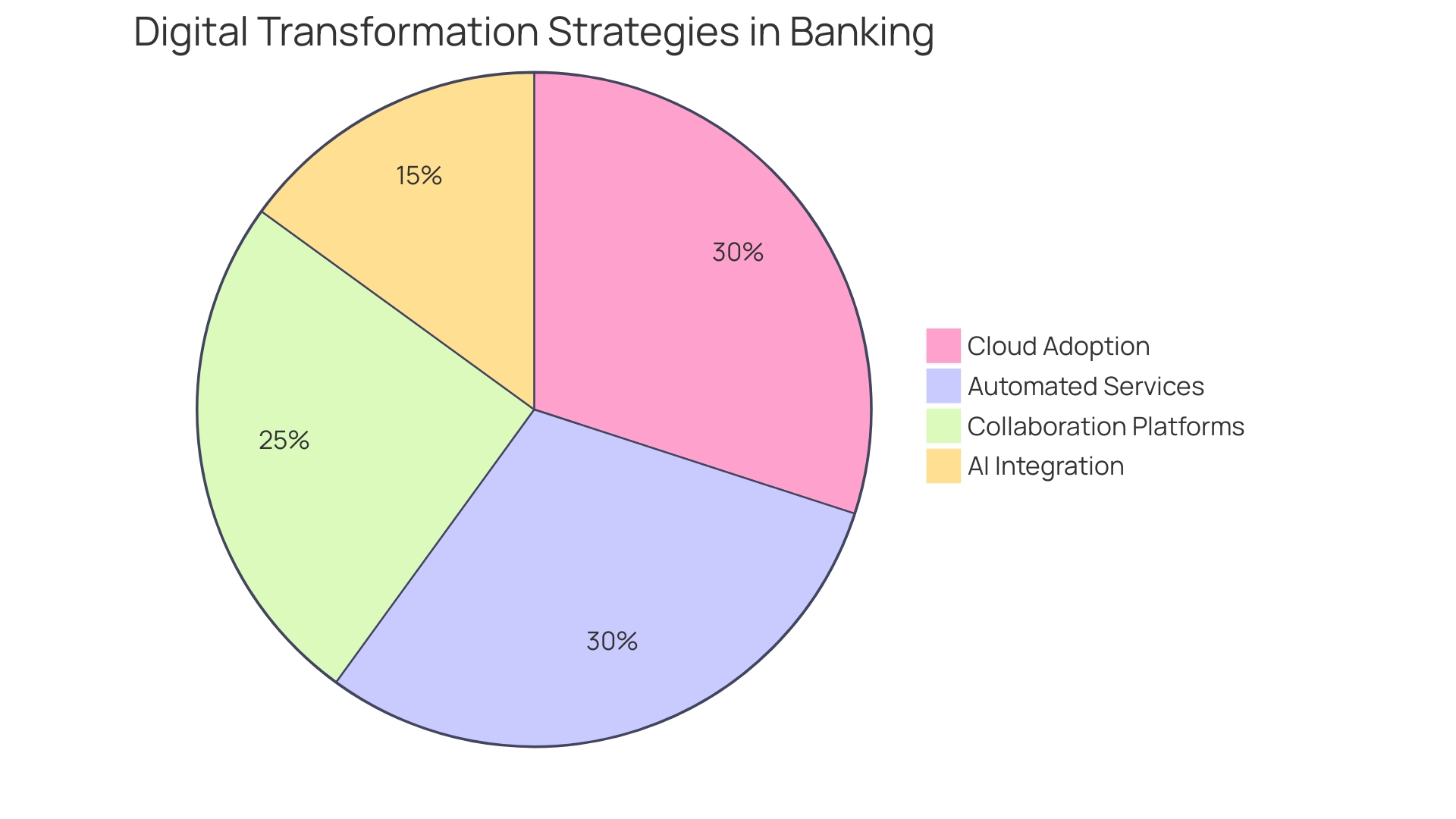
Scalability and Efficiency in Automated Banking Systems
In the pursuit of operational excellence, institutions are resorting to automation to handle the continuously increasing number of transactions and interactions with clients. Banks are utilizing this technology to expand their operations efficiently, enabling them to cater to a greater number of individuals and transactions without the corresponding rise in manual labor or physical infrastructure. For example, TBC Bank in Georgia has adopted the mission to streamline the delivery of services, improving time-to-market for their digital products. Similarly, PayPal’s early investment in scalable infrastructure laid the groundwork for handling over a million transactions daily, showcasing the power of automated systems in managing significant transaction volumes with efficiency and precision.
Artificial intelligence and cloud computing are at the forefront of this transformation, with AI’s ability to process and analyze data at high speeds, enhancing decision-making and operational efficiency. In the operations realm related to money, a staggering 80% could be automated, according to Accenture, which presents an opportunity to redirect employee efforts towards strategic initiatives and customer satisfaction. The implementation of intelligent automation has even demonstrated a revenue growth of 73% of the overall net present value (NPV) benefit and a 5.4% compound annual growth rate (CAGR) over three years for companies that have adopted it.
As leaders navigate this digital transformation, they must grapple with the balance between innovation and the human element, aiming to create systems that are not only technologically advanced but also ethically sound and customer-centric. The words of Agustin Carstens, the BIS General Manager, resonate here as he emphasizes the importance of central banks responding to society’s evolving expectations for faster, simpler, and more cost-effective transactions. The function of mechanization in banking is not only about efficiency but also about being a force for good in the financial ecosystem.
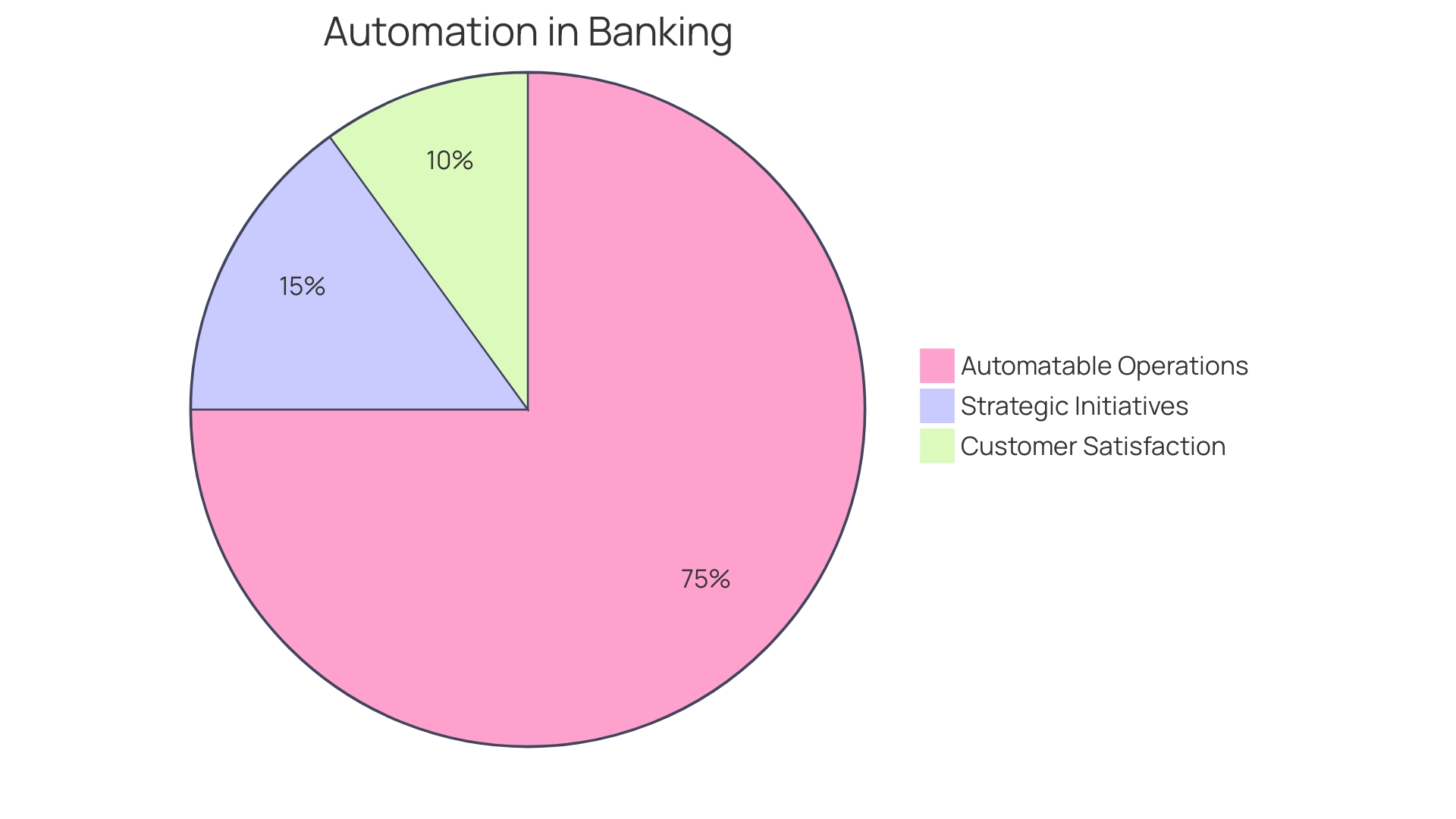
Future of Banking Automation: AI and Machine Learning
Banking automation has been revolutionized by the integration of artificial intelligence (AI) and machine learning (ML), making strides towards enhancing processes and wealth management. Advanced AI-powered chatbots and virtual assistants are now capable of delivering highly personalized service that is both context-aware and efficient. Banks are using machine learning algorithms to derive precise predictions and customized recommendations by analyzing extensive client data, which greatly enhances risk management and creates profitable cross-selling opportunities.
The automation powered by AI and ML is not limited to interactions; it also plays a crucial role in fraud detection. By identifying unusual patterns and anomalies in transactions, these technologies enable banks to prevent fraudulent activities in real-time, securing both the institution and its customers.
Generative AI, a cutting-edge development in the AI landscape, is being closely monitored by financial leaders. Its ability to automatically summarize documents, categorize information, and extract data from email attachments is revolutionizing workflows. With this technology, banks can handle a higher volume of clients, redirect resources to more strategic tasks, and enhance the speed and accuracy of their operations, all while reducing costs.
Accenture’s financial projections show a promising outlook for early adopters of generative AI, indicating a potential productivity improvement in the coming years. An impressive 73% of the time spent by U.S. bank employees could be influenced by this technology, with 39% of tasks being automated and an additional 34% augmented. This represents a significant portion of the financial sector workforce, with 41% of employees engaged in highly automatable tasks.
Despite the transformative potential of generative AI, it is met with a cautious optimism by senior financial institution leaders. While there is an understanding of the technology’s impact, there is no rush to be the first to implement it. The industry’s approach to AI is characterized by a balance of confidence and reticence, with a focus on strategic implementation.
As the financial landscape continues to evolve, AI and ML are not only enhancing existing banking services but are also fostering innovation across various business functions. With the ability to optimize operations and maintain a strategic advantage, banks that leverage these technologies are well-positioned to thrive in a competitive and AI-driven market.
Conclusion
In conclusion, automation and artificial intelligence (AI) have revolutionized the banking industry, bringing improved efficiency, enhanced customer service, and cost savings. Banks like Capital One have set industry benchmarks by embracing automation and fostering a culture of innovation. Accenture’s research highlights the significant potential for automation in banking, with a large portion of tasks amenable to AI influence.
Automation is being implemented in key areas such as customer onboarding, account management, fraud prevention, and payment processing. These innovations streamline processes, shorten approval times, and provide personalized customer support. Regulatory compliance and productivity gains are also achieved through automation, reducing working hours significantly.
Technologies like Robotic Process Automation (RPA), Graph Neural Networks (GNNs), and conversational AI tools are used in banking automation. They automate tasks, analyze data, and deliver personalized experiences to customers. Real-time data processing and compliance ensure seamless operations and data security.
Automation enhances the customer experience with responsive support, personalized interactions, and targeted marketing efforts. Digital transformation initiatives, such as cloud-based infrastructure and collaboration platforms, drive operational efficiency and innovation. The integration of AI into banking services creates a future where banking experiences seamlessly integrate into customers’ lives.
Scalability and efficiency are key benefits of automated banking systems. Automation enables banks to handle increasing transaction volumes without a proportional increase in manual effort or physical infrastructure. Artificial intelligence and cloud computing enhance decision-making and operational efficiency.
The future of banking automation lies in the integration of AI and machine learning (ML). Advanced chatbots, virtual assistants, and ML algorithms deliver personalized customer service, improve risk management, and detect fraud in real-time.
Banking leaders must approach automation strategically, balancing confidence and reticence. By leveraging automation and embracing innovation, banks can thrive in a competitive and AI-driven market, delivering exceptional customer experiences and maintaining a strategic advantage.

